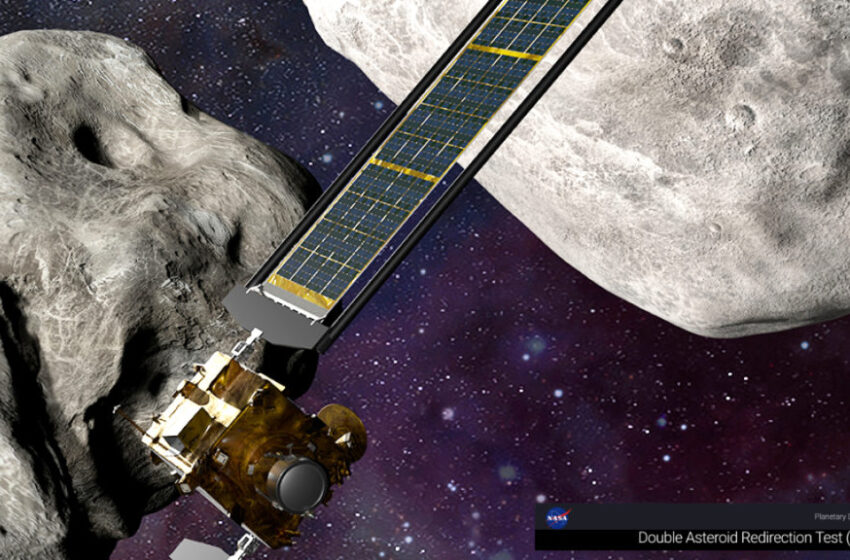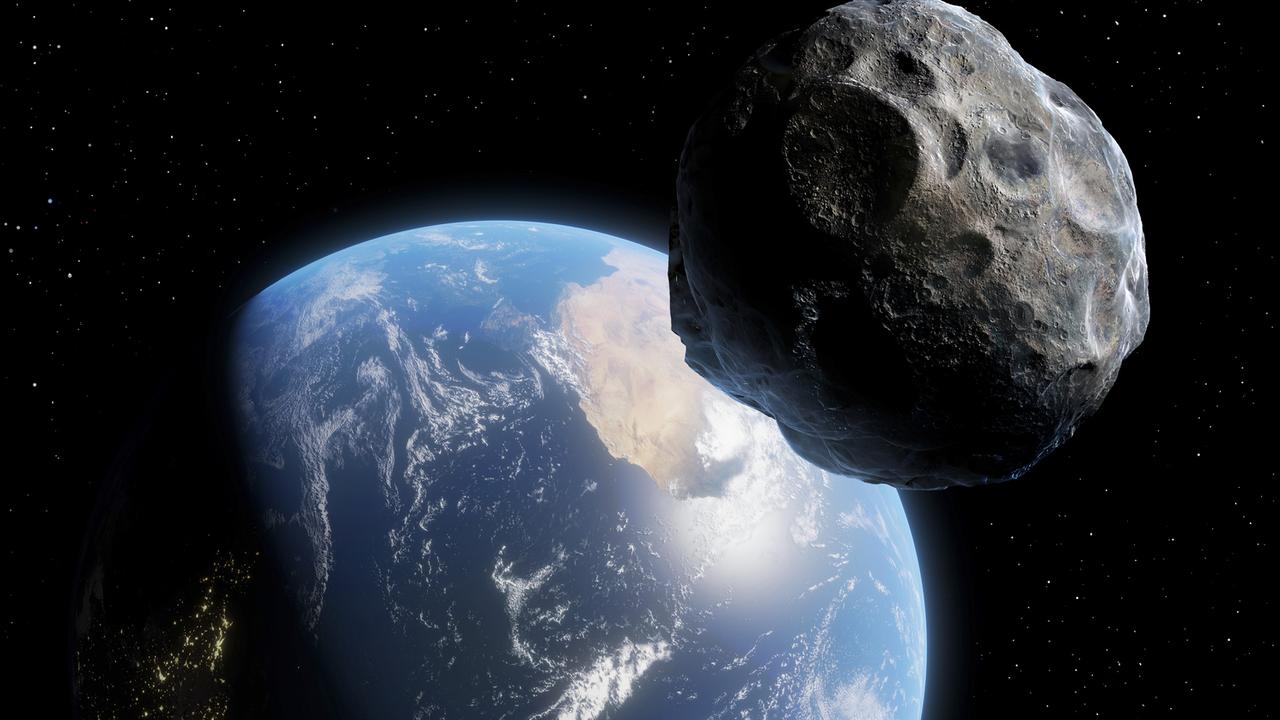
What is NASA’s DART Program? How Will this Save the Earth from Destruction?

- A moonlet of the non-earth-threatening asteroid Didymos called Dimorphos is roughly 6.8 million miles from Earth.
- This strategy will determine if it is possible to alter an asteroid’s trajectory by colliding a rising spacecraft into it.
- The Earth is frequently struck by numerous minor asteroids, most of which are destroyed by the intense pressure of the planet’s atmosphere.
The DART project is part of NASA’s efforts to prepare the Earth for another asteroid attack like the one that swept out the dinosaurs 66 million years ago.

What is DART?
As per NASA, the Double Asteroid Redirection Test, also known as DART, “is the very first expedition dedicated to researching and verifying one technique of asteroid deflection by modifying an asteroid’s trajectory in space by kinetic impact.”
Since it was launched in November of the previous year, the spacecraft had spent slightly more than nine months moving closer to the destination it was aiming for. A moonlet of the non-earth-threatening asteroid Didymos called Dimorphos is roughly 6.8 million miles from Earth.
On Tuesday, a spacecraft belonging to the National Aeronautics and Space Administration (NASA) called Double Asteroid Redirection Test (DART) successfully collided with an asteroid. The mission, which was the first of its kind, attempted to determine whether or not asteroids that potentially pose a threat to Earth in the far future could be safely destroyed.
“The DART mission of NASA is a step towards preparing the world for a potential future asteroid strike like the one that killed dinosaurs some 66 million years ago,” Indian scientists said. “The chances of which are very slim in our lifetime.”
DART was designed to intercept a smaller asteroid moonlet named Dimorphos, which had a diameter of 160 meters and was the subject of the world’s first demonstration of planetary defense technology.
“There are a number of comets and asteroid bodies that orbit our Sun, and they are all around us. Only a tiny percentage of them might pose a threat to Earth. As a result, it is in our best interest to prepare our defenses so that in the future we can avoid asteroids that are heading in the direction of Earth and could potentially cause catastrophic damage “Chrispin Karthick, a scientist at the Indian Institute of Astrophysics (IIA) in Bengaluru, was the one who made the statement.
Karthick, involved in the DART project, said that the project “definitely is a step towards” preparing the globe for a potential future disaster like the one that is believed to have contributed to the dinosaur extinction some 66 million years ago.
“This DART mission, which was completed successfully, is an illustration of that. We are now aware of how to precisely direct the spaceship toward such a modest target. As a result of the post-impact observations obtained by this DART mission, we are also able to get ourselves ready for the larger body “Karthick stated this to PTI.

Why is DART so Important?
The mission is the first to test a planetary defense technique known as a “kinetic impactor.” This strategy will determine if it is possible to alter an asteroid’s trajectory by colliding a rising spacecraft into it. If successful, this could one day save Earth.
NASA’s DART mission was just a one-way mission with the sole purpose of destroying the asteroid Dimorphos, which was found to be orbiting a giant asteroid called Didymos, which had a diameter of 780 meters. In all likelihood, neither of these asteroids poses any kind of danger to the world. A meteorite with a diameter of ten kilometers is thought to have caused the extinction of the dinosaurs.
To deflect the asteroid, NASA employed a strategy known as kinetic impact and successfully piloted the spacecraft into a collision course with the asteroid to achieve its goal.
Experimental Mission to Protect Earth
The DART mission is an experimental endeavor designed to test the feasibility of diverting an asteroid. “The idea is that if we can encounter these asteroids whose trajectory is towards us and we do that at a sufficient distance from the Earth, then a minor deflection will be sufficient to change the path of the asteroid,” he added. This is the basic premise of the plan.
Large Asteroids Have Less Chance of Hitting Earth.
On the other hand, scientists believe that the majority of asteroids that are enormous and have the potential to damage or impact the Earth have a minimal chance of colliding with the globe. The Earth is frequently struck by numerous minor asteroids, most of which are destroyed by the intense pressure of the planet’s atmosphere. Even while the pressure of the atmosphere can destroy the outer core of sufficiently giant asteroids, a significant portion of these asteroids will still collide with the earth and cause harm. The scientists will now establish that the impact caused by DART changed Dimorphos’ orbit around Didymos using telescopes stationed on the ground.

One of the key objectives of the full-scale test is to correctly measure how much the asteroid was deflected to determine how much the collision will reduce the orbit of Dimorphos by approximately 1%, which is around 10 minutes.
First-time, Humanity to Protect Against an Asteroid
The DART mission is the first time humanity has attempted to change the path of an asteroid by intentionally colliding with an artificial object with it. The positive impact that was made today is a significant advance in that particular direction.
Today, DART will impact the moonlet Dimorphos at a speed of around 6.6 kilometers per second (14,768 miles per hour) to modify its orbit within the Didymos binary asteroid system. But why not point the spacecraft directly at the massive asteroid and hurtle it toward it? First, I’ll give you a few reasons.
The scientists believe that they will be able to significantly alter the orbit of the asteroid Didymos by crashing into the smaller moonlet rather than the giant asteroid Didymos. This will be accomplished through the moonlet’s gravitational pull. Even a minute shift in the orbital motion of the moonlet can cause the Didymos’ trajectory to be thrown off.
Conclusion
That’s all about our discussion on What is NASA’s DART program? How will this save the earth from destruction? It’s time in humanity that scientists try to protect the earth against asteroids. NASA must check the DART program experimentally.
Link Source: NASA





















